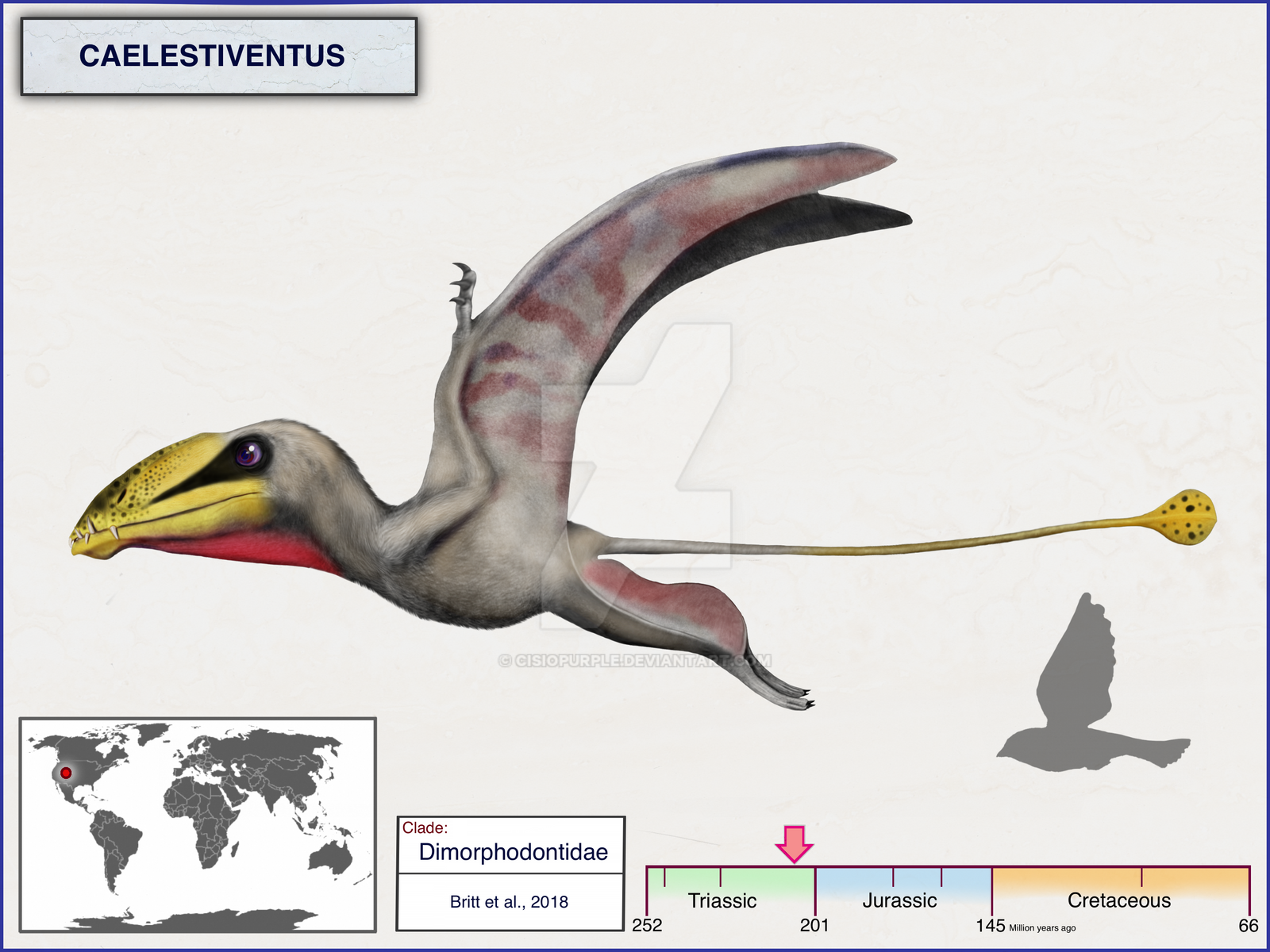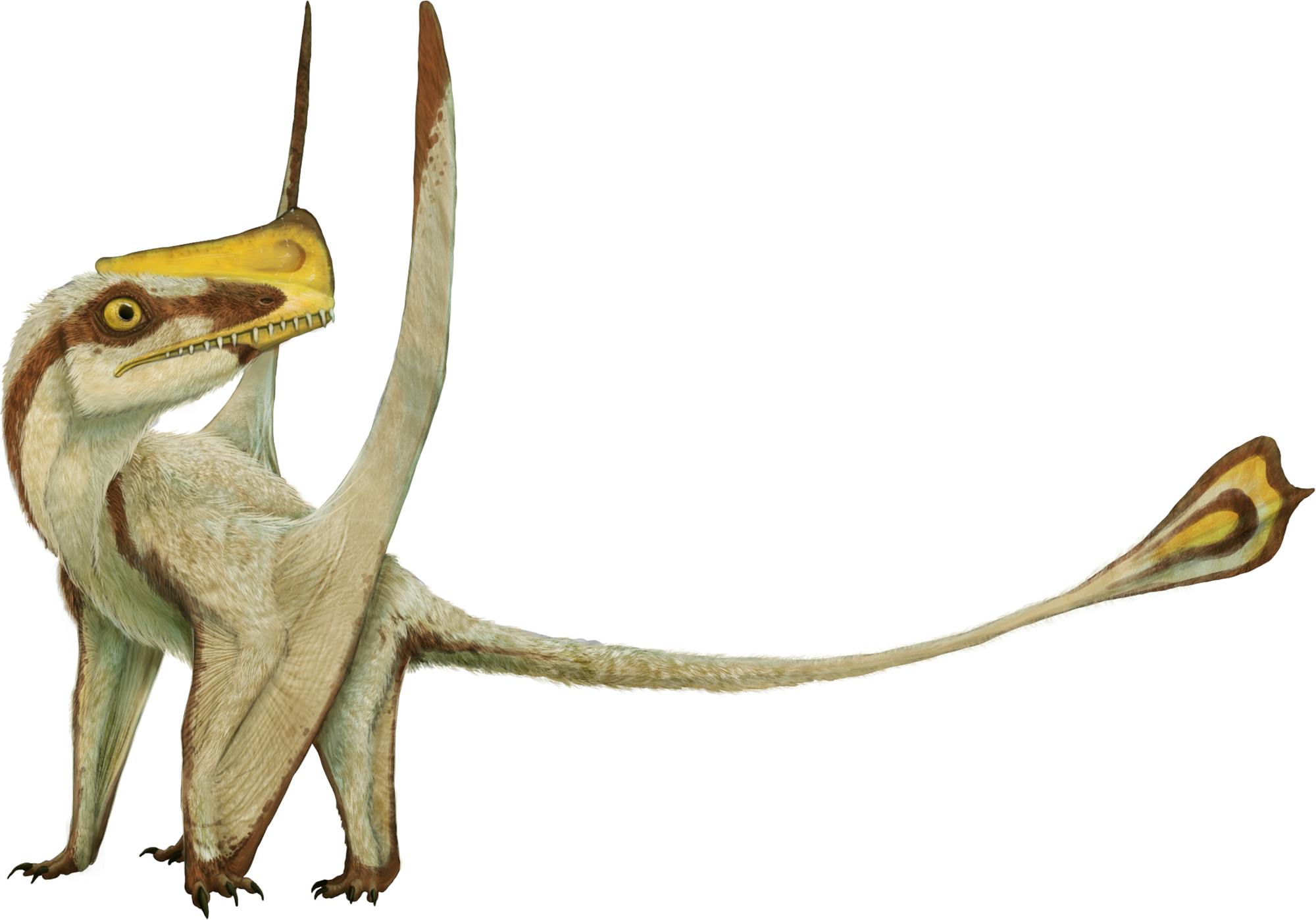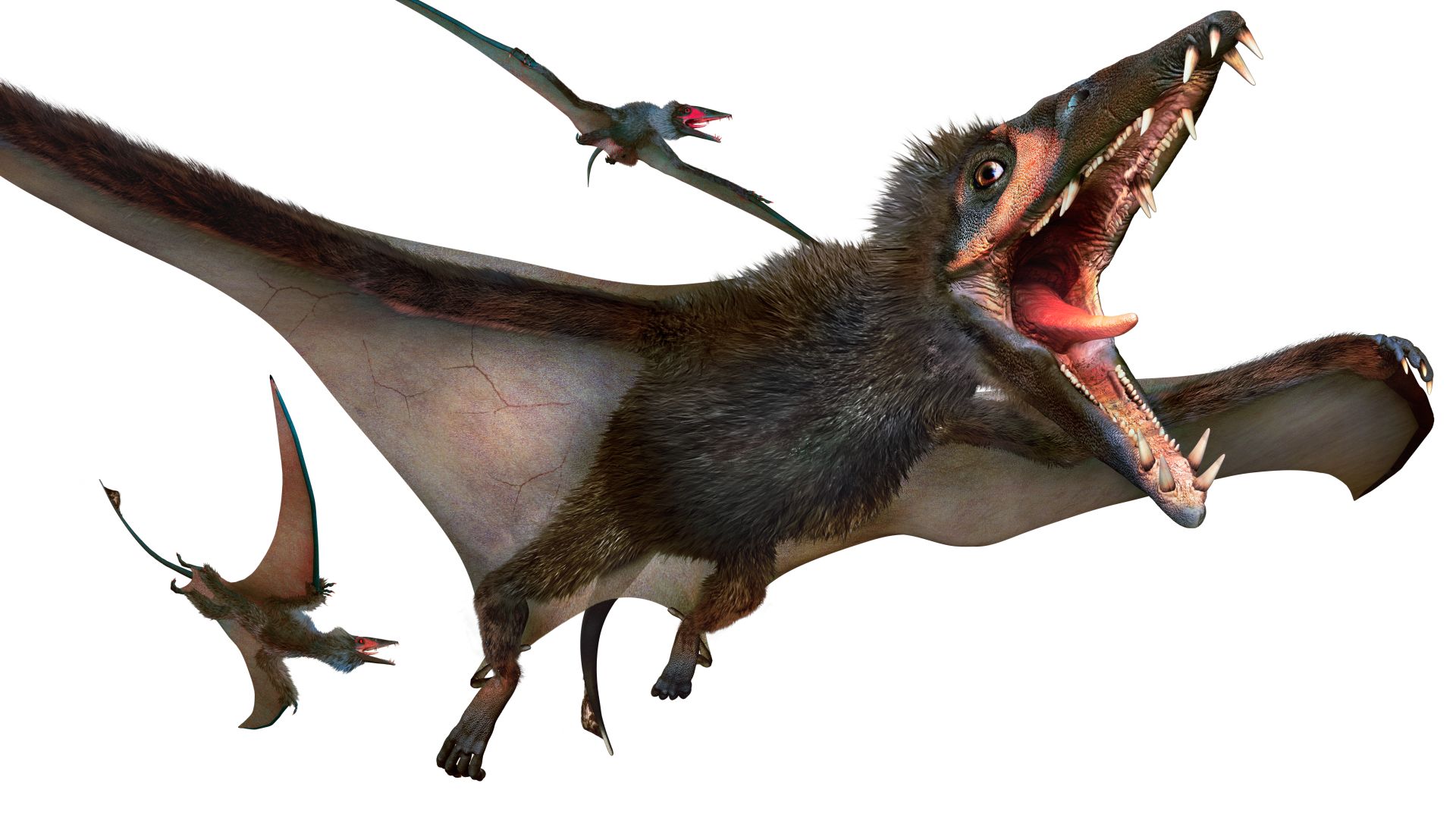You are using an out of date browser. It may not display this or other websites correctly.
You should upgrade or use an alternative browser.
You should upgrade or use an alternative browser.
Triassic Pack
- Thread starter Paleoguy
- Start date
If we could get a Triassic Pack I narrowed it down to four creatures.
Postosuchus
Plateosaurus
Placerias
Tanystropheus
Postosuchus
Plateosaurus
Placerias
Tanystropheus
https://en.wikipedia.org/wiki/Tanystropheus
I think 3 Animals of the Triassic are now " Must Have Suggestions", because almost every one suggestedd themIf we could get a Triassic Pack I narrowed it down to four creatures.
Postosuchus
Plateosaurus
Placerias
Tanystropheus
https://en.wikipedia.org/wiki/Tanystropheus
These are :
1. Plateosaurus
2.Postosuchus
3. Tanystropheus
But for the 4.th animal I would suggest at least One Pterosaur, because we have already some Dinosaurs and Marine Reptiles of the Triassic ingame , but not one single Pterosaur of it !
Here Are My Suggestions :
a.) Caelestiventus ( 1,5 m Wingspan) .... The biggest known Triassic Pterosaur.


b.) Austiadactylus ( 1,2 m Wingspan) .... Interesting headcrested longtail Pterosaur.

c.) Eudimorphodon ( 1,0m Wingspan) .... best Preserved Fossil of a Triassic Pterosaur.

Which of this 3 Species ( a,b,c) would you choose ?
I would pick Caelestiventus. I think Raeticodactylus and Preondactylus could be nice Triassic pterosaur species to add to the game as well.I think 3 Animals of the Triassic are now " Must Have Suggestions", because almost every one suggestedd them!
These are :
1. Plateosaurus
2.Postosuchus
3. Tanystropheus
But for the 4.th animal I would suggest at least One Pterosaur, because we have already some Dinosaurs and Marine Reptiles of the Triassic ingame , but not one single Pterosaur of it !
Here Are My Suggestions :
a.) Caelestiventus ( 1,5 m Wingspan) .... The biggest known Triassic Pterosaur.


b.) Austiadactylus ( 1,2 m Wingspan) .... Interesting headcrested longtail Pterosaur.

c.) Eudimorphodon ( 1,0m Wingspan) .... best Preserved Fossil of a Triassic Pterosaur.

Which of this 3 Species ( a,b,c) would you choose ?
Here are my picks for the Triassic Period (I'm saving Pterosaurs for an Aviary DLC's!

With the recent DLC, the game now has three packs focused on the Cretaceous period. That being said, I feel like we need more attention on the other periods, like the Jurassic, Triassic, and Permian periods. I also have some suggestions for species that could make nice additions to the game, which include:
Metoposaurus, An extinct genus of stereospondyl temnospondyl amphibian, known from the Late Triassic of Germany, Italy, Poland, and Portugal. It possessed small, weak limbs, sharp teeth, and a large, flat head. This creature mainly fed on fish. Many Metoposaurus mass graves have been found, probably from creatures that grouped together in drying pools during drought. I would recommend if it gets added to the game that it should be required to live in groups. Its name means front lizard.

Mastodonsaurus, An extinct genus of temnospondyl amphibian from the Middle Triassic in Southern Germany. It belongs to a Triassic group of temnospondyls called Capitosauria, characterized by their large body size and presumably aquatic lifestyles. Mastodonsaurus remains one of the largest amphibians known, and may have exceeded 6 meters (20 feet) in length. The marked reduction of its limbs, the strong tail, and sensory grooves on the head called sulci show that Mastodonsaurus was an aquatic animal that rarely, if ever, ventured on land. Mastodonsaurus may have been completely unable to leave the water, as large quantities of bones have been found that suggest individuals died in large numbers when pools dried up during times of drought. (Top left of picture)
Paracyclotosaurus, An extinct genus of temnospondyl amphibian that lived during middle Triassic period, about 235 million years ago, and fossils have been found in Australia, India, and South Africa. It grew to be around 2.45 meters (8.0 ft.) long and weighing between 159 and 365 kg (351 and 805 lb.). It is known from a single specimen that was discovered by quarry miners in a brick pit in St. Peters in Sydney, New South Wales, Australia. The discovery, made in 1910, was from a large ironstone nodule within Ashfield Shale which contained the nearly complete skeleton. The Genus name means Near Wheeled Lizard. The Species name is a reference to Sir Tannatt William Edgeworth David, the individual who arranged for the British Museum (Natural History) to acquire the specimen. (Bottom left of picture)
Cyclotosaurus, An extinct genus of temnospondyl amphibian, that was part of the Mastodonsauridae family, that lived during the mid to late Triassic period and was found in Greenland, Germany, Poland, and Thailand. It was of great size for an amphibian. It represents the last of the Mastodonsaurids. Its name means "round eared lizard" in Ancient Greek, derived from round openings or fenestrae in the cheeks, which are thought to contain structures of the middle ear. (Bottom right of picture)

Aphaneramma, An extinct genus of marine temnospondyl amphibian. It lived during the early Triassic period approximately 240 million years ago. Fossils have been found in the Mianwali Formation of Pakistan, Madagascar, the Zhitkov Formation of Russia, and the Kongressfjellet Formation of Svalbard (Norway). It is believed to have primarily hunted fish.

Wantzosaurus, A genus of temnospondyl amphibian of the Trematosauridae family. Fossils have been found in the Early Triassic Middle Sakamena Formation (Sakamena Group) of what is now Madagascar. It showed adaptations for an almost completely aquatic lifestyle, having the ability to swim by lateral undulation.
Macrocnemus, An extinct genus of archosauromorph reptile known from the Middle Triassic (Late Anisian to Ladinian) of Europe and China. Macrocnemus is a member of the Tanystropheidae family and includes three species. It is a small reptile measuring 1.1–1.2 metres (3.6–3.9 ft) long. The holotype specimen of this species was destroyed during World War II, but a cast of it survived. The name Macrocnemus is Greek for "long tibia". (Top right of picture)
Augustaburiania, An extinct genus of tanystropheid archosauromorph from the latest early Triassic period from the Volgograd Region, western Russia. All specimens were recovered in the right slope of the Don River valley from the Lipovskaya Formation. Augustaburiania is the oldest known tanystropheid. (Middle right of picture)
Dinocephalosaurus, a genus of long necked, aquatic protorosaur that inhabited the Triassic seas of China. It is thought to be a marine species based on poorly-ossified and paddle-like limbs which would have prevented it from going ashore. One specimen discovered at the Luoping locality preserves a embryo within its abdomen, indicating that Dinocephalosaurus gave birth to live young like many other marine reptiles. Dinocephalosaurus is the only known member of the Archosauromorpha to give live birth, with the possible exception of the metriorhynchids, a group of marine crocodylomorphs. It was a large member of the Protorosauria, attaining a maximum body length of at least 3.5 m (11 ft). Its name is derived from the Latin words din- ("terrible"), cephalo- ("head"), and saur ("lizard") to create the genus name Dinocephalosaurus, which refers to the "ghastful skull" of the holotype. (Bottom right of picture)

Azendohsaurus, An extinct genus of herbivorous archosauromorph reptile from roughly the late Middle to early Late Triassic Period of Morocco and Madagascar. It is significant as it may be one of the earliest endothermic archosauromorphs known, and suggests that a warm-blooded metabolism was ancestral to the later archosaurs, including the dinosaurs. It grew to be 2–3 meters (6.6–9.8 ft.) long. It is believed to have had a herbivorous diet. (Middle left of picture)
Shringasaurus, An extinct genus of archosauromorph reptile that lived during the middle Triassic period from India. It is known from the type and only known species, S. indicus. Shringasaurus is known from the Denwa Formation in the state of Madhya Pradesh. Shringasaurus was an allokotosaur, a group of unusual herbivorous reptiles from the Triassic, and is most closely related to the smaller and better known Azendohsaurus in the family Azendohsauridae. Shringasaurus had two large horns over its eyes that faced up and forwards from its skull. It was a large-bodied quadruped, with an estimated body length of 3–4 meters (9.8–13.1 ft.). The genus was named using the ancient Sanskrit word for "horn", 'Śṛṅga' (शृङ्ग), for the unique horns on its skull, combined with the Ancient Greek σαῦρος (sauros) for "lizard". The specific name indicus is Latin for "Indian", to refer to its country of discovery. (Top right of picture)

Metoposaurus, An extinct genus of stereospondyl temnospondyl amphibian, known from the Late Triassic of Germany, Italy, Poland, and Portugal. It possessed small, weak limbs, sharp teeth, and a large, flat head. This creature mainly fed on fish. Many Metoposaurus mass graves have been found, probably from creatures that grouped together in drying pools during drought. I would recommend if it gets added to the game that it should be required to live in groups. Its name means front lizard.
Mastodonsaurus, An extinct genus of temnospondyl amphibian from the Middle Triassic in Southern Germany. It belongs to a Triassic group of temnospondyls called Capitosauria, characterized by their large body size and presumably aquatic lifestyles. Mastodonsaurus remains one of the largest amphibians known, and may have exceeded 6 meters (20 feet) in length. The marked reduction of its limbs, the strong tail, and sensory grooves on the head called sulci show that Mastodonsaurus was an aquatic animal that rarely, if ever, ventured on land. Mastodonsaurus may have been completely unable to leave the water, as large quantities of bones have been found that suggest individuals died in large numbers when pools dried up during times of drought. (Top left of picture)
Paracyclotosaurus, An extinct genus of temnospondyl amphibian that lived during middle Triassic period, about 235 million years ago, and fossils have been found in Australia, India, and South Africa. It grew to be around 2.45 meters (8.0 ft.) long and weighing between 159 and 365 kg (351 and 805 lb.). It is known from a single specimen that was discovered by quarry miners in a brick pit in St. Peters in Sydney, New South Wales, Australia. The discovery, made in 1910, was from a large ironstone nodule within Ashfield Shale which contained the nearly complete skeleton. The Genus name means Near Wheeled Lizard. The Species name is a reference to Sir Tannatt William Edgeworth David, the individual who arranged for the British Museum (Natural History) to acquire the specimen. (Bottom left of picture)
Cyclotosaurus, An extinct genus of temnospondyl amphibian, that was part of the Mastodonsauridae family, that lived during the mid to late Triassic period and was found in Greenland, Germany, Poland, and Thailand. It was of great size for an amphibian. It represents the last of the Mastodonsaurids. Its name means "round eared lizard" in Ancient Greek, derived from round openings or fenestrae in the cheeks, which are thought to contain structures of the middle ear. (Bottom right of picture)
Aphaneramma, An extinct genus of marine temnospondyl amphibian. It lived during the early Triassic period approximately 240 million years ago. Fossils have been found in the Mianwali Formation of Pakistan, Madagascar, the Zhitkov Formation of Russia, and the Kongressfjellet Formation of Svalbard (Norway). It is believed to have primarily hunted fish.
Wantzosaurus, A genus of temnospondyl amphibian of the Trematosauridae family. Fossils have been found in the Early Triassic Middle Sakamena Formation (Sakamena Group) of what is now Madagascar. It showed adaptations for an almost completely aquatic lifestyle, having the ability to swim by lateral undulation.
Macrocnemus, An extinct genus of archosauromorph reptile known from the Middle Triassic (Late Anisian to Ladinian) of Europe and China. Macrocnemus is a member of the Tanystropheidae family and includes three species. It is a small reptile measuring 1.1–1.2 metres (3.6–3.9 ft) long. The holotype specimen of this species was destroyed during World War II, but a cast of it survived. The name Macrocnemus is Greek for "long tibia". (Top right of picture)
Augustaburiania, An extinct genus of tanystropheid archosauromorph from the latest early Triassic period from the Volgograd Region, western Russia. All specimens were recovered in the right slope of the Don River valley from the Lipovskaya Formation. Augustaburiania is the oldest known tanystropheid. (Middle right of picture)
Dinocephalosaurus, a genus of long necked, aquatic protorosaur that inhabited the Triassic seas of China. It is thought to be a marine species based on poorly-ossified and paddle-like limbs which would have prevented it from going ashore. One specimen discovered at the Luoping locality preserves a embryo within its abdomen, indicating that Dinocephalosaurus gave birth to live young like many other marine reptiles. Dinocephalosaurus is the only known member of the Archosauromorpha to give live birth, with the possible exception of the metriorhynchids, a group of marine crocodylomorphs. It was a large member of the Protorosauria, attaining a maximum body length of at least 3.5 m (11 ft). Its name is derived from the Latin words din- ("terrible"), cephalo- ("head"), and saur ("lizard") to create the genus name Dinocephalosaurus, which refers to the "ghastful skull" of the holotype. (Bottom right of picture)
Azendohsaurus, An extinct genus of herbivorous archosauromorph reptile from roughly the late Middle to early Late Triassic Period of Morocco and Madagascar. It is significant as it may be one of the earliest endothermic archosauromorphs known, and suggests that a warm-blooded metabolism was ancestral to the later archosaurs, including the dinosaurs. It grew to be 2–3 meters (6.6–9.8 ft.) long. It is believed to have had a herbivorous diet. (Middle left of picture)
Shringasaurus, An extinct genus of archosauromorph reptile that lived during the middle Triassic period from India. It is known from the type and only known species, S. indicus. Shringasaurus is known from the Denwa Formation in the state of Madhya Pradesh. Shringasaurus was an allokotosaur, a group of unusual herbivorous reptiles from the Triassic, and is most closely related to the smaller and better known Azendohsaurus in the family Azendohsauridae. Shringasaurus had two large horns over its eyes that faced up and forwards from its skull. It was a large-bodied quadruped, with an estimated body length of 3–4 meters (9.8–13.1 ft.). The genus was named using the ancient Sanskrit word for "horn", 'Śṛṅga' (शृङ्ग), for the unique horns on its skull, combined with the Ancient Greek σαῦρος (sauros) for "lizard". The specific name indicus is Latin for "Indian", to refer to its country of discovery. (Top right of picture)
My Wishlist for a Triassic Species DLC. I'm going to release a video on the subject on youtube soon. I'd love and appreciate your input and feedback on the subject. Along with a Permian DLC, a Triassic pack is my 2nd favorite idea honestly.
Note:
I only included one dinosaur Plateosaurus in the Triassic DLC's because we already have two carnivorous dinosaurs from the Triassic Period in JWE2's roster. Coelophysis and Herrerasaurus. Besides, i think it would be a more accurate representation of the Triassic Period to include the Non-Dinosaurian animals that lived alongside the first dinosaurs.

I thought that Atopodentatus would be a unique addition to JWE2. Instead of eating fish, it was herbivorous like how Dudong eat Seagrass.


Note:
I only included one dinosaur Plateosaurus in the Triassic DLC's because we already have two carnivorous dinosaurs from the Triassic Period in JWE2's roster. Coelophysis and Herrerasaurus. Besides, i think it would be a more accurate representation of the Triassic Period to include the Non-Dinosaurian animals that lived alongside the first dinosaurs.

I thought that Atopodentatus would be a unique addition to JWE2. Instead of eating fish, it was herbivorous like how Dudong eat Seagrass.


